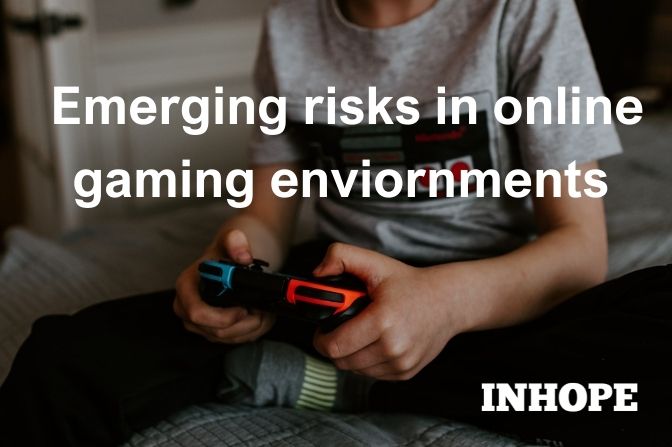Article
Industry News & Trends
Emerging risks in online gaming environments
The online aspect of gaming has risen in popularity over recent years due to increased internet accessibility. As of 2020, there were 932 million online gamers and currently an estimated 1 billion worldwide. These users (many of whom remain anonymous) play and interact with one another on mobile devices, tablets, gaming consoles, or laptops while connected to the internet.
While online gaming has provided a way for people to establish connections and make friends, it has also become a method for online child predators to target victims. Online child predators use it as a tool to lure and initiate contact with young people in the hopes of exploiting them.
The level of interaction gaming platforms now have is astounding. The reality is that online gaming is becoming a social networking space where you are interacting with all kinds of different users. Besides chatrooms, there is now the option for voice, video, and some games even allow communication through web cameras and headsets. This hyper-connectivity has allowed online gaming to be more accessible and social than ever.
For example, an offender groomed two young boys and incited them for child sexual abuse material (CSAM) on the popular game Minecraft. The number of prosecutions is minimal compared to the number of interactions that have led to child abuse in the form of grooming and sextortion for instance. We hope to see many cases like these being tried. This also requires us to examine that the correct legislation is in place in order to prosecute, and also that correct steps are in place to prevent this from happening.
The danger lies in the fact that online gaming environments can be misused anonymously and have a multitude of communication options where abuse can unfold. Online child predators take advantage of these communication capabilities and go on these platforms because this is where children are present.
To understand the risks of online gaming environments we have covered a few examples and definitions below that showcase how forms of interactions can be abused.
1.) The challenges with multiplayer mode
The rise of multiplayer games, where users can play against their friends and anonymous users they meet on the game’s network in real-time. Built-in features allow them to easily connect and enter chats with people they do not know.
Violence: Within a competitive environment, multiplayer gaming can fuel high emotions between opposing players, resulting in harmful behaviour online. Verbal aggression, graphic language and sexual imagery are prevalent in online multiplayer games. Typically, these live interactions are unfiltered and not moderated.
2.) Adult imposters
Oftentimes, predators will pose as a child and strike up a conversation with a victim and gradually build their trust. They may then pressure the victim into revealing personal information or sharing sexually explicit images. These interactions with strangers are what needs to be watched out for.
3.) Doxing
This is when someone publicly reveals your private information like a phone number or address without your consent. The aim here is usually to harass, extort or shame the victim. While doxxing is not exclusive to multiplayer gaming, it is mainly utilised by cyberbullies and online gamers. Young people face the possibility of intimidation, psychological distress, death threats and personal details like the location of their school being shared.
4.) Voice masking
Some gaming systems have a voice masking feature. While this may seem like a preventative safety feature, it can be abused by online child predators. Therefore, it is important to have proper parental controls and safeguards in place since many of these games are not designed for minors and therefore such settings are fewer or not available.
Key takeaways
- Check the game’s age rating. Higher ratings signify that the game has violent or sexual content.
- Test the game first before allowing your child to interact with it.
- Turn off or disable communication features such as chat, voice, or webcam.
- Use appropriate screen names or pseudonyms (do not include your real name, age, or location).
- Use parental controls or family-friendly filters.
The reality is that the majority of our interactions are online, and people who want to commit harmful acts are proactively leveraging the capabilities of online platforms to do so. The digital environment we live in is vast and many risks are unknown and/or unexpected. It is essential to be educated about the potential harms and inherent risks that exist within the open-access online gaming space and ensure that you and your child are aware.
Read more about online child predators and the platforms they operate on.

Photo by INHOPE
If you'd like to learn more about topics like this, then
click here to sign up for INHOPE Insights and Events.